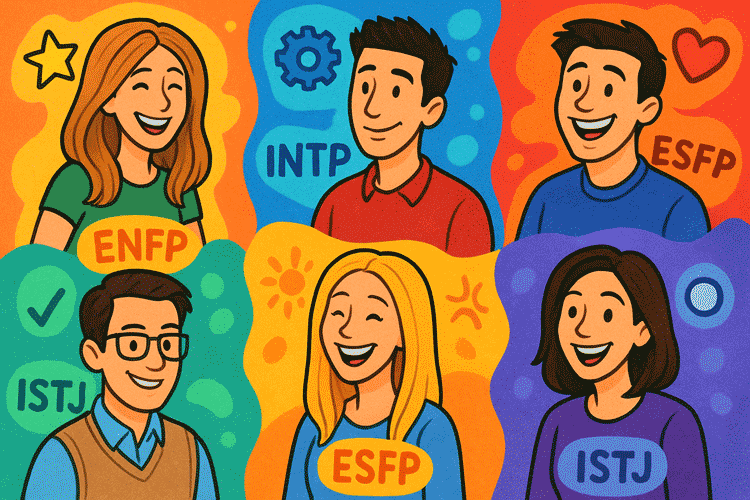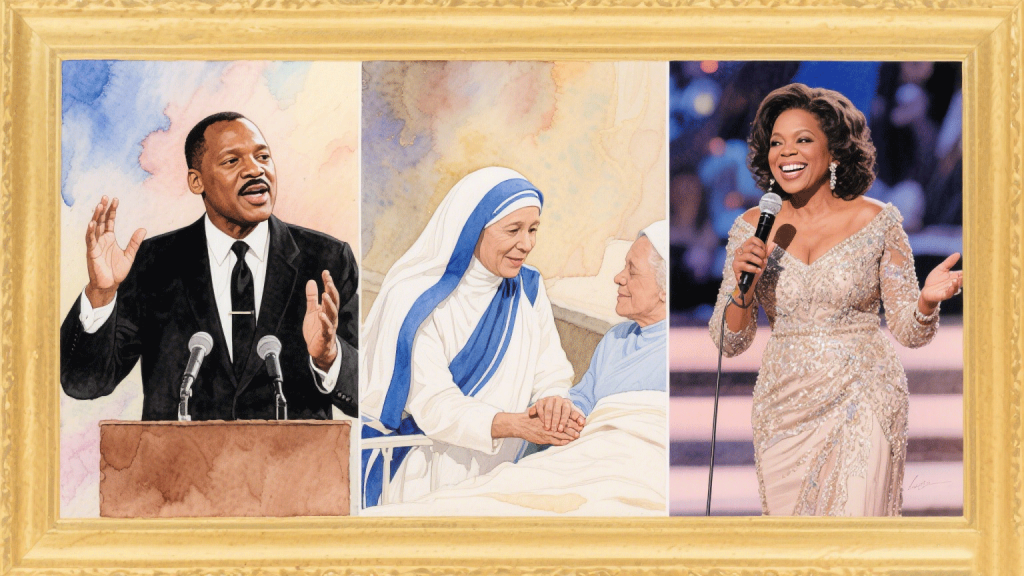This article deeply explores the “Smiling Friends MBTI” personalities, analyzing how each character in the show represents a unique MBTI type and what it reveals about humor, relationships, and human psychology.
Introduction
When we talk about Smiling Friends MBTI, we are not merely discussing a cartoon — we are delving into a psychological mirror of human nature. “Smiling Friends,” created by Michael Cusack and Zach Hadel, has become a cultural phenomenon for its strange yet heartwarming humor. But beneath its bizarre surface lies a fascinating psychological layer that can be analyzed through the MBTI personality framework.
Understanding Smiling Friends MBTI allows fans to explore the psychological depth behind each quirky character — from the cheerful optimism of Pim to the dry cynicism of Charlie. This analysis will help you understand not just what makes these characters funny, but what makes them relatable.
The MBTI Framework in “Smiling Friends”
Before diving into individual characters, let’s briefly outline the MBTI (Myers-Briggs Type Indicator) model that forms the foundation of our Smiling Friends MBTI analysis.
The MBTI divides personalities into 16 types based on four dichotomies:
Extraversion (E) vs. Introversion (I) Sensing (S) vs. Intuition (N) Thinking (T) vs. Feeling (F) Judging (J) vs. Perceiving (P)
These combinations form personality profiles like ENFP, ISTJ, INTP, and so on. By mapping these profiles to the characters in Smiling Friends, we can see how humor, empathy, and conflict emerge naturally from their traits.
1. Pim — The ENFP Dreamer

Pim, the cheerful and optimistic yellow character, perfectly embodies the ENFP type. In the context of Smiling Friends MBTI, he represents the boundless enthusiasm and empathy that define this type.
Traits of ENFP:
Curious and imaginative Emotionally expressive Motivated by ideals Seeks connection with others
Pim’s constant drive to help clients smile — even when it leads to chaos — showcases the ENFP’s deep desire to bring positivity into the world. However, his idealism often clashes with reality, showing the ENFP’s tendency to overextend emotionally.
In MBTI terms, Pim’s character highlights the “Feeling” and “Perceiving” aspects, reminding viewers that optimism can be both a strength and a vulnerability.
2. Charlie — The INTP Analyst
If Pim is the heart of Smiling Friends, Charlie is the brain. His detached, skeptical attitude aligns strongly with the INTP personality type — the thinker and analyst of the MBTI system.
INTP Traits:
Logical and analytical Independent and skeptical Dislikes emotional dramatics Solves problems through reason
In the Smiling Friends MBTI framework, Charlie represents how logic interacts with absurdity. He approaches the company’s bizarre clients with detached analysis, often missing emotional nuances but grounding the team with reason. His dry humor and “too-real” perspective resonate with INTP audiences who value intellect over sentiment.
3. Alan — The ESFP Entertainer
Alan, the confident and attention-seeking side character, is the quintessential ESFP — the performer and people-pleaser of the MBTI spectrum.
ESFP Traits:
Outgoing and energetic Craves excitement Emotionally expressive Lives in the present moment
In the Smiling Friends MBTI narrative, Alan’s flair for drama and love for chaos capture the spontaneous energy that makes ESFPs magnetic. His every action screams, “Let’s have fun now and worry later!” — a mindset that often leads to comedic consequences.
ESFPs watching the show often identify with Alan’s impulsive optimism and fear of boredom, making him a perfect embodiment of this type.
4. Glep — The ISTP Technician
Glep, the tiny purple creature who speaks in incomprehensible noises, represents the ISTP archetype — the quiet problem-solver who prefers action over talk.
ISTP Traits:
Practical and adaptable Prefers doing over discussing Emotionally reserved Independent thinker
Even though Glep doesn’t say much, his actions often move the story forward. Within the Smiling Friends MBTI framework, he symbolizes how ISTPs express themselves through practical contribution rather than words. Glep’s subtle competence and independence mirror the ISTP’s understated yet vital presence in any team.
5. Mr. Boss — The ENTJ Leader
Every company needs direction, and in Smiling Friends, Mr. Boss fills that role with his no-nonsense demeanor. He fits perfectly into the ENTJ category — the decisive, strategic leader type.
ENTJ Traits:
Natural organizer and leader Goal-oriented and assertive Demands efficiency Prefers structure over chaos
In the Smiling Friends MBTI analysis, Mr. Boss exemplifies the ENTJ’s drive to control and manage. However, his leadership is often undermined by the unpredictability of his employees. His frustration mirrors that of many real-world ENTJs — visionaries trapped in an imperfect system.
6. The Devil — The ENTP Trickster
Perhaps the most fascinating entry in the Smiling Friends MBTI universe is The Devil, who appears as a chaotic, manipulative yet oddly charming figure. His energy screams ENTP — the “Debater.”
ENTP Traits:
Quick-witted and clever Enjoys challenging conventions Innovates through chaos Loves intellectual play
The Devil’s interactions reflect the ENTP’s curiosity and defiance of norms. In true ENTP fashion, he bends logic for amusement and provocation. His presence in Smiling Friends reminds us that comedy often arises from disruption — a core ENTP trait.
7. Shrimp — The ISFJ Caregiver
Shrimp, though minor, provides stability and kindness that balance the show’s chaos. This makes him the ISFJ type — dependable, loyal, and nurturing.
ISFJ Traits:
Supportive and empathetic Detail-oriented Responsible caretaker Avoids conflict
In Smiling Friends MBTI, Shrimp represents the gentle heart that grounds the absurdity. He reflects the ISFJ’s quiet strength — compassionate yet firm when needed. His scenes may be small, but they add warmth to the overall tone.
Smiling Friends MBTI and the Psychology of Humor
Why does analyzing Smiling Friends MBTI matter? Because humor, at its core, is psychological. The contrast between Pim’s optimism (ENFP) and Charlie’s skepticism (INTP) mirrors real human dynamics — feeling versus thinking, idealism versus realism.
Psychologists suggest that humor functions as an emotional balancing mechanism. By mapping humor through MBTI, we can understand why certain jokes resonate differently across personality types:
| MBTI Type | Humor Style | Example Reaction |
|---|---|---|
| ENFP | Playful, imaginative | Laughs at absurdity |
| INTP | Dry, analytical | Appreciates irony |
| ESFP | Physical, spontaneous | Loves slapstick |
| ENTJ | Strategic, witty | Enjoys clever comebacks |
| ISFJ | Wholesome | Prefers heartwarming humor |
This table reveals how Smiling Friends MBTI is more than a fan theory — it’s a framework for understanding how personality shapes laughter.
Cultural Impact of the Smiling Friends MBTI Analysis
Since its debut, fans have used Smiling Friends MBTI discussions across Reddit, Twitter, and YouTube to connect deeper with the show. These debates reveal how personality theory has become a modern language for empathy.
People don’t just ask, “Who’s your favorite character?” anymore. They ask, “Which MBTI type do you think Charlie is?” This intersection of fandom and psychology demonstrates how Smiling Friends MBTI bridges entertainment with self-reflection.
8. Comparative MBTI Study: Smiling Friends vs. Other Shows
| Show | Main MBTI Archetypes | Key Contrast |
|---|---|---|
| Smiling Friends | ENFP, INTP, ENTJ, ESFP | Absurd optimism vs. logic |
| Rick and Morty | INTP, ENTP | Nihilism and intellect |
| BoJack Horseman | INFJ, ENTP, ISFP | Emotional depth and trauma |
| The Office | ESFJ, ISTJ | Workplace dynamics |
Compared to others, Smiling Friends MBTI strikes a unique balance — it uses simplicity and absurdity to hide profound psychological truths. This contrast makes the series both bizarrely funny and strangely meaningful.
Conclusion: Why “Smiling Friends MBTI” Resonates
The analysis of Smiling Friends MBTI shows that the series succeeds because it taps into universal aspects of personality. Through characters like Pim (ENFP), Charlie (INTP), and Mr. Boss (ENTJ), the show mirrors how we all navigate life — with laughter, frustration, and a search for meaning.
Smiling Friends MBTI is not just a tool for fan speculation. It’s a lens for self-awareness. By understanding which character resonates with you, you learn a bit more about your own humor, empathy, and worldview.
So, next time you laugh at one of the show’s ridiculous moments, remember: beneath the absurdity lies a reflection of you.
The Smiling Friends cast features diverse MBTI personalities that reflect their unique traits and behaviors. For example, Pim could be seen as an ENFP for his energetic and spontaneous nature, while Charlie might align with INFP traits due to his sensitive and introspective personality. Understanding these types adds depth to the humor and dynamics of the show.
Recognizing the MBTI types of characters helps viewers understand motivations, predict reactions, and appreciate the subtleties in interactions. It can make comedic situations more meaningful and allow fans to connect with characters on a psychological level.
No official MBTI types have been confirmed by the creators. Most analyses are fan interpretations based on character behavior, dialogue, and personality patterns observed throughout the episodes.
Yes! Just like analyzing the Smiling Friends cast, understanding MBTI can improve communication, reduce conflicts, and enhance empathy in real-life relationships. Identifying personality differences can make interactions smoother and more enjoyable.

